Exploring the Functionality and Design of Light-Dependent Resistors
2024-05-10
4005
The light-dependent resistor or light-dependent resistor (LDR) is a simple but extremely important component in modern electronic technology. The device uses its sensitivity to light to adjust the resistance value, allowing it to exhibit significant resistance changes under different lighting conditions. Photoresistors are used in a wide range of applications, from automated home lighting to complex industrial photometry systems. The purpose of this article is to delve into the working principles, structural design, and practical uses of photoresistors in various applications, and to understand how these components can be designed and optimized to suit different environments and needs.
Catalog

Figure 1: Photoresistor
Overview of Photoresistor
Photoresistors, often called light-dependent resistors (LDRs), are important electronic devices used to detect light. Its working principle is simple yet powerful: its resistance changes significantly with changes in light intensity. When placed in the dark, the resistance of a photoresistor can reach several million ohms. Under bright light, however, this resistance drops dramatically to just a few hundred ohms.
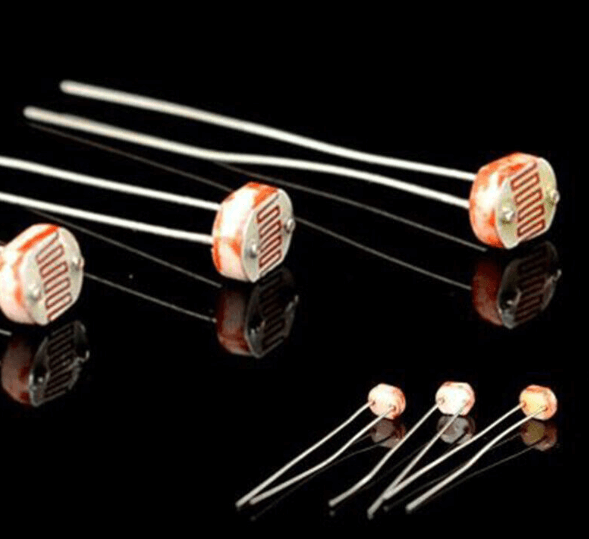
Figure 2: Photoresistor
This ability to change resistance based on lighting conditions makes photoresistors important in creating automatic controls, photoelectric switches, and other light-sensitive technologies. Their function is simple - detect light intensity and adjust the resistance accordingly, which in turn triggers various responses in the circuit of which they are a part. This makes them invaluable in systems where light intensity detection is functional.
Understand the Symbol and Structure of Photoresistor
In electronic schematics, the symbol for a light-dependent resistor (LDR) is similar to that of a standard resistor but contains one key modification - an outward-facing arrow, indicating its sensitivity to light. This unique symbol helps circuit designers quickly identify the LDR's function of controlling response based on light intensity, easily distinguishing it from other components such as phototransistors or photodiodes that also use arrows to indicate light sensitivity.

Figure 3: Symbol of Photoresistor
The physical structure of a photoresistor has an insulating base, usually made of ceramic, that supports the photosensitive element it operates on. The photosensitive material is usually cadmium sulfide (CdS), applied in a specific pattern, usually a zigzag or spiral. These patterns are not only artistic; They are strategically placed to increase the efficiency of the device by increasing the surface area exposed to light.
A zigzag or helical structure maximizes light absorption and promotes more efficient scattering of incoming light. This layout improves the efficiency of the photoresistor in adjusting its resistance to changing lighting conditions. By improving the interaction of light with sensitive materials, photoresistors become more sensitive and dynamic, suitable for applications that require precise control of light sensitivity.
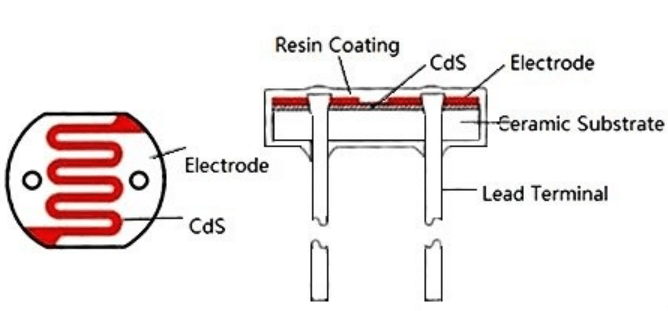
Figure 4: Structure of Photoresistor
Working Principle of Photoresistor
Photoresistors, also known as light-dependent resistors (LDRs), work through the photoconductivity effect. This process is initiated when light interacts with the sensitive material of the photoresistor. Specifically, when light hits the surface of a photoresistor, it excites electrons within the material.
These electrons initially stabilize within the valence band of the atom, absorbing photons from incident light. The energy from the photons must be enough to push these electrons through an energy barrier, called the band gap, to the conduction band. This transition marks a change from an insulator to a conductor, depending on the amount of exposure.
When exposed to light, materials such as cadmium sulfide (CdS), commonly used in LDRs, allow electrons to gain enough energy to jump to the conduction band. As these electrons move, they leave "holes" in the valence band. These holes act as positive charge carriers. The presence of free electrons and holes in the material significantly enhances its conductivity.
As continued illumination creates more electrons and holes, the total number of carriers in the material increases. The increase in carriers results in a decrease in the resistance of the material. Therefore, the resistance of a photoresistor decreases as the intensity of incident light increases, and more current flows in the light than in the dark.
Characteristics of Photoresistor
Photoresistors are highly valued in optoelectronic control systems due to their acute sensitivity to changes in lighting conditions. Their ability to significantly change resistance under different lighting conditions. In bright light, the resistance of a photoresistor drops dramatically to less than 1,000 ohms. Conversely, in a dark environment, the resistance may rise to hundreds of thousands of ohms or more.
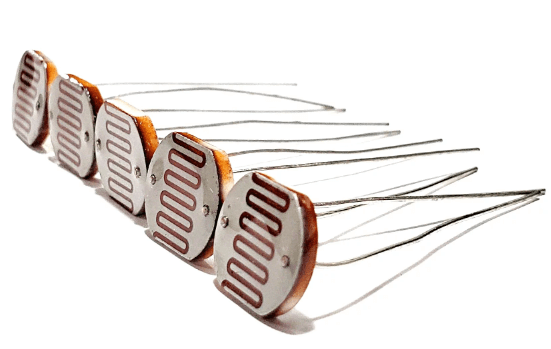
Figure 5: Photoresistor
Photoresistors behave significantly nonlinearly, meaning that their response to light intensity does not vary uniformly. For example, cadmium sulfide (CdS) photoresistors respond strongly to visible light but are less sensitive to ultraviolet or infrared light. This selective responsiveness requires careful consideration of the wavelength of light in the intended environment when selecting a photoresistor for a specific application.
The response time of a photoresistor is a unique characteristic that requires practical understanding during operation. When exposed to light, the resistance of a photoresistor will drop rapidly, usually within a few milliseconds. However, when the light source is removed, the resistance does not immediately return to its original high value. Instead, it recovers gradually, taking anywhere from a few seconds to a few seconds. This delay, known as hysteresis, is useful in applications that require fast response times.
Materials and Classification of Photoresistor
Photoresistors, also known as light-dependent resistors (LDRs), are made from different materials that can significantly affect their light-sensing capabilities. Common materials include:
Cadmium Sulfide (CdS): Highly sensitive to visible light, ideal for applications that require response to sunlight or artificial indoor lighting.
Lead Sulfide (PbS): This material is sensitive to infrared light and is commonly used in night vision and thermal imaging equipment.
Cadmium Selenide (CdSe) and Thallium Sulfide (TI2S): These materials are less common but are selected for specific wavelength sensitivity in special applications.
Each material reacts differently to light wavelengths. For example, CdS is more sensitive to shorter wavelengths of visible light (such as blue and green), while PbS is more effective at longer infrared wavelengths.
Photoresistors are classified based on the way their resistance changes with light:
Linear photoresistors: Often synonymous with photodiodes, they exhibit an almost linear change in resistance as light intensity changes. They are preferred in applications where precise measurement of light intensity is required, such as in light meters or automatic feedback control systems where accurate light level data is required.
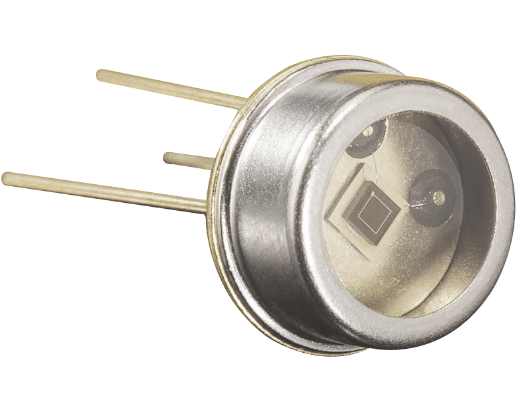
Figure 6: Linear Photoresistors
Nonlinear Photoresistors: These are suitable for applications requiring a wide response range. They have a steep response curve, which allows them to react quickly under various light intensities. Nonlinear LDR is commonly used in systems that detect light and automatically control lighting based on ambient light conditions, such as street lights and automated night lights.
Circuit Applications of Photoresistor
Photoresistors, or light-dependent resistors (LDRs), are an integral part of the circuit design of automatic control and light detection systems. These circuits typically contain multiple components such as LDRs, relays, Darlington transistor pairs, diodes, and other resistors to manage current flow and control device action based on lighting conditions.
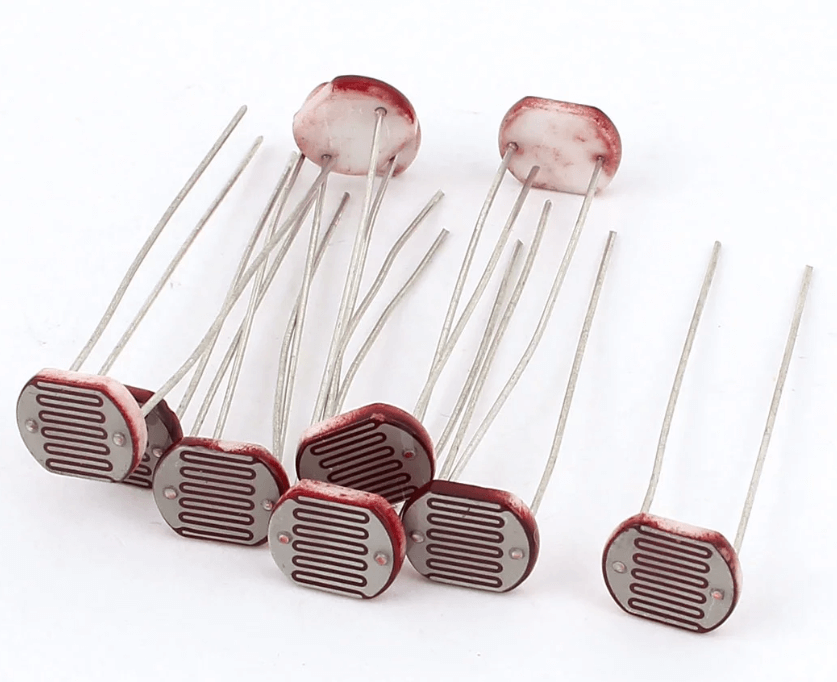
Figure 7: Photoresistor
In a common setup, the circuit is powered by a bridge rectifier that converts AC to DC, or directly from a battery. A typical design includes the following steps:
Voltage conversion: A step-down transformer reduces the standard 230V AC voltage to a more manageable 12V.
Rectification and Conditioning: The 12V AC is then converted to DC using a bridge rectifier. The voltage regulator then stabilizes the output to 6V DC, ensuring safe and efficient operation of the circuit components.
The operating mechanism of the LDR within the circuit will affect normal operation:
Daytime/Lighting Conditions: LDRs exhibit low resistance during the day or when exposed to bright light. This lower resistance allows most of the current to flow through the LDR directly to the ground. Therefore, the relay coil cannot receive enough current to activate, causing the relay to remain closed and the connected light to remain off.
Night/Dark Conditions: Conversely, in low light or at night, the LDR's resistance spikes, reducing the current flowing through it. After the current flowing through the LDR is reduced, the Darlington transistor pair can amplify the remaining current sufficiently to activate the relay coil. This action triggers the relay, turning on the light connected to the circuit.
Response Delay of Photoresistor
The response delay of a photoresistor, or light-dependent resistor (LDR), is a key measure of its performance. This delay refers to the time it takes for the LDR to adjust its resistance in response to changes in light intensity. Due to inherent physical and chemical properties, LDRs may not respond immediately to illumination fluctuations, which has implications for applications that require fast response.
When light intensity suddenly increases, the resistance of an LDR typically drops rapidly. However, the term "fast" can range from just a few milliseconds to tens of milliseconds. This variation is affected by the type of material used in the LDR and its manufacturing standards.
When light intensity is reduced, the resistance of the LDR may take a considerable time to return to the elevated dark state. This delay may last from a few seconds to tens of seconds. The slow return to high resistance is especially noticeable when transitioning from bright light to dark, affecting the effectiveness of the LDR in rapidly changing conditions.
Frequency Dependence of Photoresistor
The effectiveness of a photoresistor (LDR) is closely related to the wavelength of light it detects, with various LDRs exhibiting different sensitivities to specific light frequencies. This sensitivity results from the material composition of the LDR, which determines the optimal wavelength range for its responsiveness.
The following materials are sensitive to different types of light.
Visible light sensitivity: Materials such as cadmium sulfide (CdS) are highly sensitive to visible light, particularly the yellow and green spectra. These LDRs are best suited for applications that detect changes in visible light quickly and accurately.
Infrared light sensitivity: On the other hand, materials such as lead sulfide (PbS) are excellent at detecting infrared light. These LDRs are primarily used in applications such as night vision equipment and thermal imaging systems, where sensitivity to infrared light is important.
LDR material selection depends on the application's specific requirements.
Infrared Sensitive LDR: Typically chosen for systems that operate in low-light conditions, such as automatic door controls in buildings or dynamic surveillance systems for nighttime security purposes.
Visible Light Sensitive LDRs: For projects that require precise response to changes in visible light, such as ray tracing systems or automatically dimming lights, LDRs that are sensitive to the visible light spectrum are preferred.
Photoresistor Technical Indicators
Photoresistors, or light-dependent resistors (LDRs), are optoelectronic components that adjust their resistance in response to changes in light intensity. They enable the efficient operation of light control systems. Understanding their technical specifications is key to using them correctly in a variety of applications.
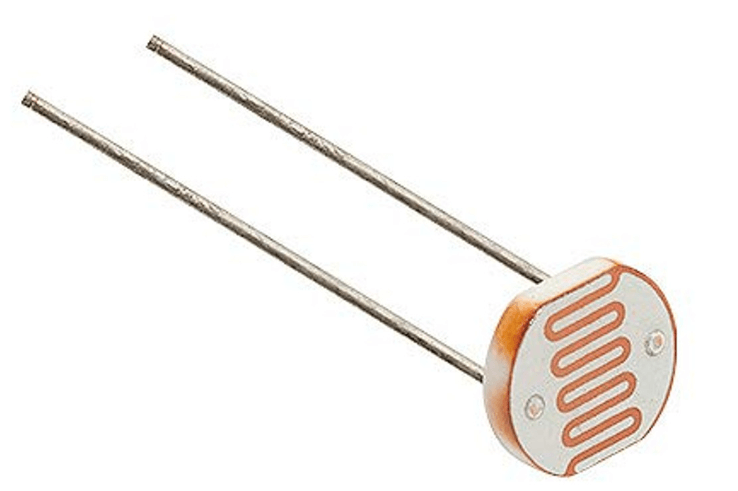
Figure 8: Photoresistor
Power Voltage Parameters
Maximum power consumption: A typical LDR can handle up to 200 milliwatts (mW) of power.
Operating Voltage: The maximum safe operating voltage of the LDR is approximately 200 volts (V). These limits ensure that the LDR operates within safe and efficient parameters without risk of damage or failure.
Photoresponse and Sensitivity
Peak wavelength sensitivity: LDRs have specific sensitivities to certain wavelengths of light. Typically, LDRs have the highest sensitivity possible at a wavelength of 600 nm within the visible spectrum. This specification affects selecting an LDR that matches the lighting conditions of its intended environment and optimizing its performance.
Resistance Characteristics
Photoresistance vs. Dark Resistance: The resistance of an LDR varies greatly under different lighting conditions. For example, at low light levels (about 10 lux), its resistance may range from 1.8 kiloohms (kΩ) to 4.5 kΩ. In brighter light (about 100 lux) the resistance may drop to about 0.7 kΩ. This variability is suitable for designing devices such as light-sensitive switches because changes in resistance directly trigger operation.
Dark resistance and recovery: The dark resistance of LDR is an important performance indicator. This value measures the resistance in the absence of light and how quickly the LDR returns to this state after the light is removed. For example, the dark resistance might be 0.03 megaohms (MΩ) one second after the light stops, rising to 0.25 MΩ five seconds later. This recovery rate is important for applications that require rapid response to changes in lighting conditions.
Advantages of Photoresistor
High sensitivity to light: Photoresistor or light-dependent resistor (LDR) is known for its excellent sensitivity to light. They can detect and respond to changes in light intensity, from very low to high levels. This feature makes LDRs particularly useful in systems that require automatic light dimming, such as dimming lights in a home or controlling street lights based on ambient light conditions.
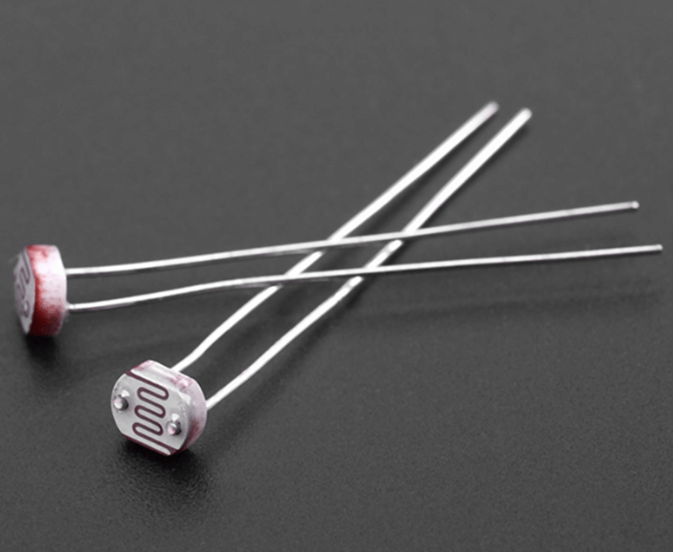
Figure 9: Photoresistor
Cost Effectiveness: One of the most significant advantages of LDR is its cost-effectiveness. LDRs are less expensive to produce compared to other light-sensitive components such as photodiodes and phototransistors. This makes them a top choice for applications with budget constraints in mind, providing a cost-effective solution without sacrificing performance.
Simple to use and install: The LDR has a simple design that is easy to understand and integrate into the circuit. They require only two connections, making them easy to assemble and practical even for those with minimal electronics expertise. This ease of use extends to a variety of applications, from educational projects to more complex systems in commercial electronics.
Response to Light-Dark Resistance Ratio: The ability of LDRs to exhibit significant resistance differences in light and dark conditions is another key advantage. For example, the resistance of an LDR may range from a few hundred kiloohms in the dark to a few hundred ohms when exposed to light. This dramatic shift enables devices to respond sensitively and accurately to changes in lighting, thereby enhancing the responsiveness of systems such as automatic lighting controls and photosensitive triggers.
Disadvantages of Photoresistor
Limited spectral response: Although light-dependent resistors (LDRs) are very effective at detecting light, they tend to be most sensitive to specific wavelengths. For example, cadmium sulfide (CdS) LDRs are primarily sensitive to visible light and have poor response to ultraviolet or infrared light. This specificity limits their use in applications requiring broad spectral response, such as devices for multiwavelength spectroscopic analysis that can detect a range of wavelengths.
Response time lag: A significant disadvantage of LDRs is their lag in response to rapid changes in light intensity. This hysteresis can range from a few milliseconds to a few seconds, adjusting its resistance appropriately. This delay makes LDR less suitable for applications requiring rapid response, such as high-speed optical encoders or certain types of automated processing equipment, where immediate feedback affects operational accuracy.
Temperature sensitivity: Temperature fluctuations can significantly affect the performance of an LDR. Extreme temperatures, both hot and cold, can cause significant deviations in resistance, affecting the accuracy and reliability of LDRs in temperature-sensitive environments. To mitigate this problem, systems employing LDR often require temperature compensation strategies. These include integrating temperature sensors into the circuit or employing dynamic calibration techniques to adjust for temperature-induced changes in resistance, ensuring that the LDR operates effectively within its intended temperature range.
Energy-Saving Street Lighting System Using Photoresistors
Controlling LED streetlights using light-dependent resistors (LDRs) is an effective solution for modern urban lighting systems. The technology not only reduces energy consumption by replacing traditional high-intensity discharge (HID) lamps but also increases the efficiency of LED lamps. Through intelligent control, the system automatically adjusts brightness according to ambient light levels to maximize energy savings.
Ambient light monitoring: The system includes LDRs mounted on street lights to continuously monitor ambient light intensity. As the ambient light changes, the resistance within the LDR changes accordingly. These resistance changes are then communicated to a central control system, enabling real-time light management.
Smart Brightness Adjustment: Based on the data received from the LDR, the central controller calculates the required brightness adjustment of the LEDs. During the day, when ambient light is sufficient, the system can turn off street lights or keep them at minimum brightness. When daylight decreases or light conditions are poor, the system automatically increases brightness, ensuring optimal lighting when needed.
Integration with solar energy: To further improve energy efficiency, the system integrates solar panels that convert solar energy into electrical energy and store it in batteries. This enables streetlights to operate at night on stored solar energy, promoting self-sufficiency and reducing reliance on the grid.
Wide Application of Photoresistor
Photoresistors, or light-dependent resistors (LDRs), are an integral component in a variety of automatic control and monitoring systems and are prized for their simplicity, cost-effectiveness, and sensitivity to light. These devices automatically adjust operation based on changes in ambient light, thereby improving efficiency and user-friendliness in many applications.
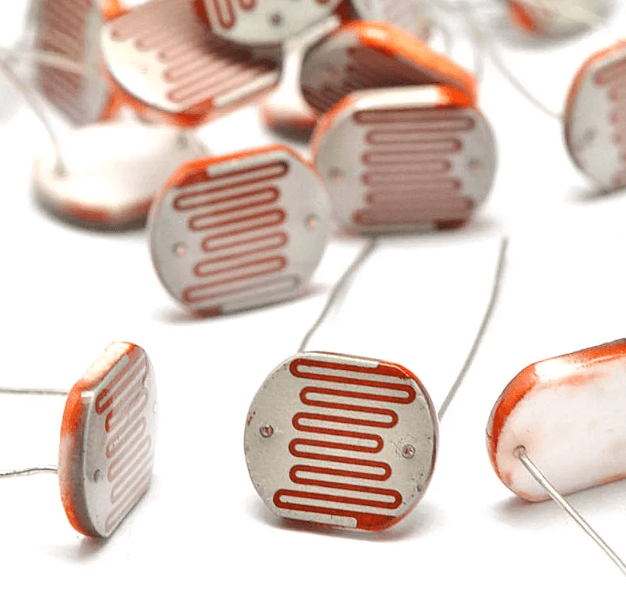
Figure 10: Photoresistor
Light Intensity Meter: A device commonly used by LDRs to measure light intensity. They can monitor the intensity of sunlight and artificial indoor lighting. This type of instrument is suitable for laboratory testing and evaluation of the performance of photovoltaic systems and other light-related technologies.
Automatic street light control: LDR is used to detect changes in natural light at dawn and dusk, automatically turning street lights on at night and turning them off when daylight returns. This automation results in significant energy savings and eliminates the need for manual controls, thereby optimizing municipal services.
Alarm Clock: In the Alarm Clock, LDR helps with the “Sunrise Simulation” feature. By detecting increases in light intensity in a room, they can gradually wake the user up, mimicking a natural sunrise.
Burglar Alarms: In security systems, LDRs are placed near windows or doors to monitor sudden changes in light caused by potential breaches. Abnormal increases or decreases in light trigger alarms, thereby enhancing safety measures.
Smart Lighting Systems: Integrating LDR into urban infrastructure projects, such as street lighting, can dynamically adjust light based on current natural lighting conditions. This not only improves energy efficiency but also ensures the reliability of urban lighting systems.
Conclusion
Through a detailed analysis of photoresistors, we can see that these simple components play an integral role in modern technology. Whether it is automated control systems in daily life or precision measurements in industry and scientific research, the characteristics of LDR make it a trustworthy solution. Although there are some limitations, such as narrow spectral response range and hysteresis effects, rational design and application strategies can still alleviate these problems. In the future, with the development of new materials and new technologies, the performance and application fields of photoresistors are expected to be further expanded, opening up more innovative optoelectronic application possibilities.
Frequently Asked Questions [FAQ]
1. How to check LDR?
To check if the photoresistor is working properly, you can take the following steps:
Prepare tools: Prepare a multimeter and set it to impedance measurement mode.
Connect the meter: Connect the two probes of the meter to the two endpoints of the LDR.
Measure the resistance value: Read the resistance value of the LDR under normal indoor light and record this value.
Change the light: illuminate the LDR with a flashlight or place it in the dark to observe the change in resistance.
Evaluation results: Under normal circumstances, when the light intensity increases, the resistance value of the LDR should decrease significantly; when the light intensity decreases, the resistance value should increase. If there is no change in resistance, it may indicate that the LDR is damaged.
2. How to use LDR?
Photoresistors are often used in circuits that need to sense light intensity, such as automatically turning lights on and off. Basic steps for using LDR include:
Integrated into a circuit: Connect the LDR in series with a suitable resistor to form a voltage divider.
Select the load: Connect this voltage divider output to a microcontroller, relay, or other control device as needed.
Adjustment parameters: By adjusting the resistance value in series with the LDR, different light response thresholds can be set.
Testing and adjustment: Through actual testing, adjust circuit parameters to achieve the best photosensitivity reaction effect.
3. Is LDR active or passive?
LDR is a passive component. It does not generate electricity itself and does not require an external power source to change its working state. The resistance value of the LDR changes automatically based on the intensity of light shining on it.
4. How do you know if a light-dependent resistor is not working?
You can judge whether the LDR is damaged by the following signs:
Resistance remains unchanged: If the resistance of the LDR remains the same when changing light intensity, this may indicate that it is damaged.
Abnormal readings: If the LDR's resistance under extreme light conditions (very bright or very dark) is very different from expected, it could also be a bad signal.
Physical damage: Check the LDR for obvious cracks, burns, or other physical damage.
Comparative test: Compare the suspected damaged LDR with a new or known good LDR to see if the performance is similar.
 ABOUT US
Customer satisfaction every time. Mutual trust and common interests.
ABOUT US
Customer satisfaction every time. Mutual trust and common interests.
function test. The highest cost-effective products and the best service is our eternal commitment.
Hot Article
- Are CR2032 and CR2016 Interchangeable
- MOSFET: Definition, Working Principle and Selection
- Relay Installation and Testing, Interpretation of Relay Wiring Diagrams
- CR2016 vs. CR2032 What’s the difference
- NPN vs. PNP: What's the Difference?
- esp32 vs stm32: which microcontroller is better for you?
- LM358 Dual Operational Amplifier Comprehensive Guide: Pinouts, Circuit Diagrams, Equivalents, Useful Examples
- CR2032 VS DL2032 VS CR2025 Comparison Guide
- Understanding the Differences ESP32 and ESP32-S3 Technical and Performance Analysis
- Detailed Analysis of RC Series Circuit
 Exploring the Diverse Uses of Step Recovery Diodes
Exploring the Diverse Uses of Step Recovery Diodes
2024-05-11
 Basic Logic Gates and Boolean Expressions
Basic Logic Gates and Boolean Expressions
2024-05-10
Hot Part Number
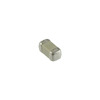 UVK105CH1R5BW-F
UVK105CH1R5BW-F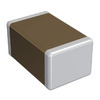 GRM219R61A335KE19D
GRM219R61A335KE19D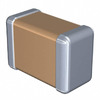 C3216X7R2A474K160AE
C3216X7R2A474K160AE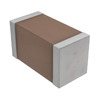 CGA3E2NP01H330J080AA
CGA3E2NP01H330J080AA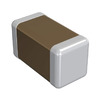 GJM1555C1H4R1WB01D
GJM1555C1H4R1WB01D 08052U3R6CAT2A
08052U3R6CAT2A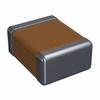 12101U150JAT2A
12101U150JAT2A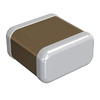 GRM0335C1H8R1BD01D
GRM0335C1H8R1BD01D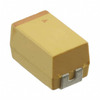 TBJE336K025LRSB0823
TBJE336K025LRSB0823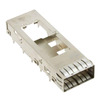 1888617-1
1888617-1
- IPG20N06S4L26ATMA1
- MT46H8M16LFCF-75
- VE-2N2-CV
- RC0805FR-0756RL
- BSM200GA120DN2S3256
- LTM4676AEY#PBF
- DSD1608PAHR
- XC5VLX110-2FF1153I
- T491B107M004AT4280
- T491A225K010AT4860
- AD73311ARZ-REEL
- LTC2440CGN#PBF
- 74ACT16245
- CY7C131-55JCT
- CY7C194-15VC
- EDB8132B2PB-8D-F
- HD64F3334YTF16
- HTS221
- MAX739EWE
- MB87001PF-G-BND-TF
- MB89068PF-G-110-BND-JN
- SC900602DH
- SCT2026CSSG
- SI4836-A10-CSR
- TC74VHCT367AF
- M063A
- AU7663A62-RBL-GR
- DRA416BIZDURQ1
- HYCOSEHOAF3P-5S60E-C
- TCC8923G-OXA
- VSP6822AZRCR
- C1812C105K5RAC7800
- TE28F128J3A-120
- SST34HF1621-70-4E-LFP
- UPD703262YGC
- DRV8889AQPWPRQ1
- R5S37033AC4400FT
- TPS259807ONRGER
- AP63356DV-7